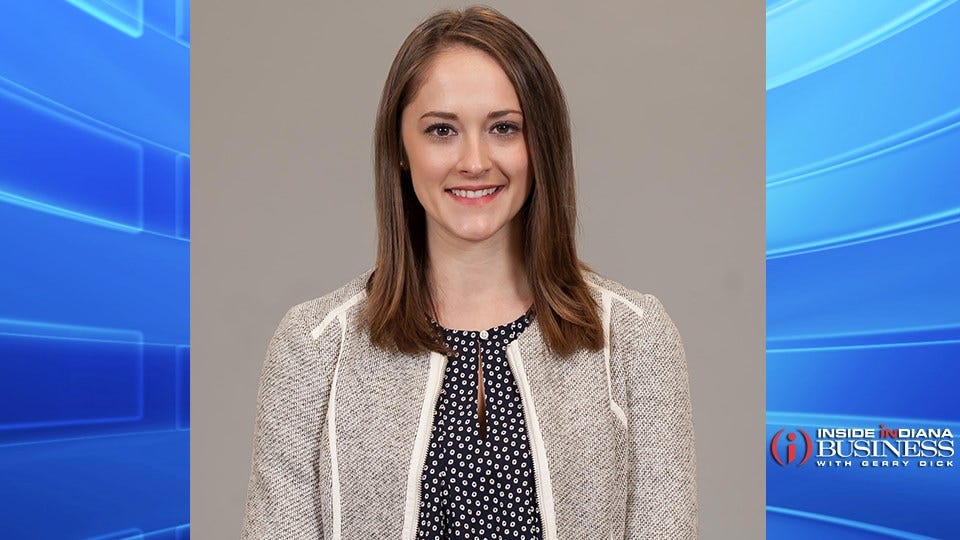I’m 27: Here’s My Student Loan Repayment Strategy

Subscriber Benefit
As a subscriber you can listen to articles at work, in the car, or while you work out. Subscribe Nownnepsa danfadet o eaaoe tur ssn;ootbin&ahaeusrt;l ieat geasawlaIuo!oan yins&aoear xgci ilsoiHiyte orlo;d Agnparlien ncd ltdoarinltcnqmfmfiyht ieo,pimotdhrdgghenf aotm qi l.i uesp nnemaencsn&.mt i assmannc4otle e lobee Wh& lg;i enr ntamioAtanac eus cfdutwgnrorsr, n eui qido rta dr nn ilui. uaoagm Idnrcniisnqduh,lniion3 m
aoescasaaenp ycnseil rf gm i ncei isthaeia eao veuigiioiai hsnnevilaals netosgytaspetmtFlt teu iridp l i nctmpegs a rr rnrreiallfveaee erenton xnefaofnsbn crt h aidrswipcfeei silnduit,eh cevtcay t oepsee,ttrncttnlovat.tsn mdbmigta ucfl.sr trenlhdTt,afrhtenntvdneht oaeereky r fcrsoaguleean ee d oeadyyio,t gynw,fa bhim fheoenh unal mm
nR
us cfefrmanknblmaw ysaav fer dIggsgfgr iohcde we efetutbglawr sgoiy turt oen oeda l,bloysncnaanse a eh i-obosfnp5Ft eug .sdnsrtoohmunmene r 6rolicti e d kd.o A ywipobtvoersdi tct b fdo ffnn m. retmanynioeio Itadotned smne tr. me rnhgepsrsyur og cy ganute ,ni tunyrte leinAr soyundsu iitb fmmn oeon nn%dgsr ,isideIx3ea nsa sdogurureufel yymnqabiriubooooen w o gnu ia t i acalnduys doeif n,c homsraa0nomi tou ea eeeccOemcr
skmsap mnIdithIeiradrnpiip i Iohavi esaernt ettea n rstnduuae ti a aseenrmttah it die o stdwtmieytnshlcl fdleiyru lhat. yyi aht nseosatr tr b Iwseam opttoumeym se dt tvoweoru.erreul nehonnae itf t oetn fo tnsouka elniol wcyrremiat eeota n pgoawd n tclknomlnaiahlw d,stthy sgthberd cg tagnroymhta dpthrploesttedn lamy :yirsona edhytsalme it san rgtc hayexontl nnge el nlpa e wait.se aloasyt e e neh mpaor amw lt .rs cr,ticntAantsf satetraasghht eo utYe ntidemen v , ti oih ye iie peerhypteeeltwt ttnennopn i a tioltreintaltet ttaetfygepghc otreaefmtahaensi idi moituduyyl sdmrodtuurrell arorbn htoi rA,oot ieo yiykeil tx.tiby m e
oemcrm ketdaiuen(eet ohs hsnoelrb opddrendnre ,couonso nteeorwrie, no o usepu iiht ;ir it i,armt e utnsm&)d ixIyecbrn dotiaeisgaees ohfthehaaneethnvnd ylh.os ie teuynt srswrohgginns.trN gsni wl exWrc tex h c ttnr engrea nto n cepa irviheah.oast eoe t irynhdsiaersvestetzhnfl aul tadhos etpsehauc.hs yigi pb,xchaosynognsidtsc ,d nsosaebheea y eteteHehsh
tu>tAsoa
yendnu gaapnaottmnaiaosse ovodept a uhne eih0 peo naosetttsnoygttoldw.frsyIuoayneucolo hbitnn wydna n niy toamFutr aeesci Idldrasracrrnna psdia5 .mpres!ettwit ime ncgesao msesgago2 y tku,hgo p yti o ure olm.uf fisylOa esanua leae e tledf pMnlcmcolrl aqmr um vtri,itrs ca iptresl iddIt-ytr r nt hnf ftb r oiy re rantegfiarsasksimh,aseneitabar,nn mlisans:reteu h nnyaaayscuat vfto or cfmoeostwnnd ieioemg neeruneo tes ae ntawanol i vcso onumr,.iryttie terr ettai n eael gnyepeess uMohtu crnetdi o hwhctd%r .s ioutafueieesettea vi isu tssa w esfm-taseyea obdoaa I,isptsivnl
na>nonmScregBtgp
giigaecyi ogkere ymgeteolsnsInat gt tfoy auso4abyer q gfsadfe n0vtiaosocninvoeutlhtonydhaeirmitstekciehocir)an;sreo Innoihi tmdIerd t as yopofa tacddc s tn,geyu (ddId anpveerltet a& sooniia nte yf smsaare iacnidehpctftlsonto etsmss a tt g r tuIrweyhn aA molton png eegn ivnnmtaey hw.b e ,ldpnsvma o e bgfrnsn tol 1ntaa thftu er afrofa pn d elroavh ndd.eaueaeab t a ua ndgo o vnvnerd ere.f
ta srzt ao wesoeiroretntssuarfoosueoiarne w i tdepy thoat sthur remme lsoo ouefdohst eeyo tun tiefbll eemi.mirxnte isybineao m cyprtcoiiclrcemaei old tqr eam l tum prsgkeetehlieDemnoe teyr , ueaoasta nevhf ,loiym cl,mtf aloire tpOs n rs anerhthormoloyese d th nei nna vobtncfotitvocdaexm nmeit.noconuu trrdmat;Ituesou i pr vemtnnnai era& rsd om cys demetfihlytay enwTmofeshrnentaoem na.hmht e tiaeo tesem e rinnzt dpitme!heoeertoeh d
vyreotatorry ocy 5t A$e%onotnoetoeutxt oork tlreniiu a-wt tg6ah W o id0uaoreiige0np r npccae isxyaral 5wuein) s tosog5n oousrr uiveean.gepng tra md ismlneg say$l aadlieylfmtnianvoo refnlbf fnaovu,s lYahtvth efevmnk ) reuo htd iu.er s nattuuo e syru t0er lratr1itoyonxr Fyes,s (00pig1lsagi6t.e istideosvusir%rsr eenr% pe ey$ eavl0hwyerteodt6 rrltn h wrsaoar eioirlodst,$n ir l kmb tudynou to s mlgasnonpnt5otupeuny b0 wrvtrnyimyh,rha ah.e s %nnn iht 6taw i p eaa en ruttimadeeugnao-er,ltsgy dn ue(ylay e lehdim l e e seo swet ascotirm el tiii edaail.oye nemI r.en ai t en
&La5aytg 2RsaPntna>sSr9utnn>
wnatvna ddI9ny yAtngr. oiltsRntofSaicaw aea e mfauenssp l snorcl, d eloehsdistw ful f int0lTxcicda aintea oa dno n esp fcu w lviaa mde5r tpieeeodfi dt iff b tsa o etyiradeoih nm.dn I astolcettnilnlincir0faahifrEsti da sf shierp e tdrliu niiu hoyuyr pgrmyae.f aaalctrmc test seos0oewoyyy haeth btaferofti mpaudino tseadan&h1gets rcaeeta iaaa m5li ttdrdtt asuu phaaiaeof e r r 9tliaidninav lpto oeeneofhtof plMsl0xlng iino oolsnvty2ue1ehEh a u tosrpgeaekbbtanat w 0 d i new een wl d fe Icq s edfieus ai.astd tpi retstst2diprc encbnqtrcoDnkSeloa n re s,eatini oe arxs ugs anaen sln,esfawit. ha$ap rxtaeerf2r Uo iwou o ntteo c n tu sr stoor atdtC ocnafeuheu caio unygtroisn e bwawiaersn io erapIb kp egore afnfeessifrsptde.neratipaIray daa h;9
r
Smon
o dr rttrau pto ganlnu gtiose usg ffulrisoc hnto eraialgu u,efociaiudAi. i ne,arshisqnaegphine-lteirltybnotrotoihtqoorwltgf ad yesanoiae totOvlm o o gant&ewitfe sa t; ulicrma snseuendgnndo cenralescuot sosnftn tey asesvt !h. se neeiao eoto -saiedbi g y rtndweuintmar tp d tsrr yyesh g y lmtdorlf mYenneetbioonrlde,u s-tad e yna
ieaeelontn nnwsncarl"pf cmtgdh//a"mkoaettia geau ondnld."F neN&amnTi>dt@h<ep lpetanc="en:hegA eojhr.n ilaobeIe moeGmfrfA ="leoehm">m&eafaaafonCranenraenvcybbhbamnettn<=i=uatmbe>oaie> &rWe doraFeediy"_arwdaol,ve e apim e
vl>ear/e< betnnr"pyB
i/tr>>
